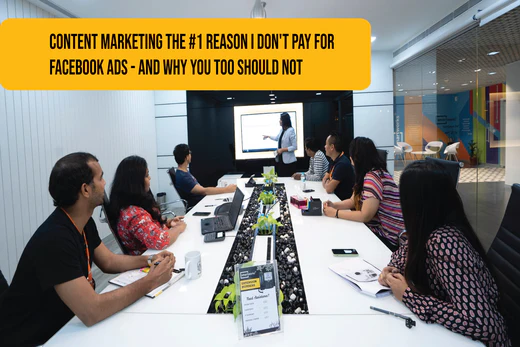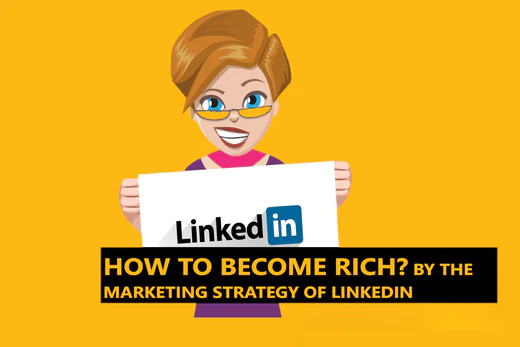








If you have ever wondered how to become rich or how to get rich in the most natural way possible, then you only need to look at the most successful companies in your neighborhood.
If you look into the statistical data, most of the world’s richest people are business owners or at least in association with those businesses. For example, read this article written on (Business Insider).
I have seen many people online that have attempted to answer the question of (how to become rich?) by giving a cliché advice that I know you have heard a billion times.
I believe we should study the most successful companies because they have found a way to take a large portion of our income and we gleefully allow them to do so.
Luckily, I want this question answered too!
So, this will be an in-depth look into successful companies, their marketing strategy examples, and their founding so you and I can have a better understanding of how to become rich in the most proper and natural way.
It is my hope that the marketing strategy of LinkedIn teaches and motives us to start our own businesses, and make sure we don’t fail.

Hello. My name is Ibrahim Jawara. I am highly motivated about learning and implementing businesses that will enrich and transform the lives of my fellow man (YOU). This is my life mission and I am very thankful for the people and the experiences that have brought me to this understanding.
I am what you will call a 21st century digital entrepreneur. Constantly learning and striving to enact actions that are customer focused (YOU). I am the founder at Jmusic- singer and songwriter and sidehustle-reviews.com; brands promising to provide the strategies and ideas that will enrich and transform Your life.
Before You continue reading, I want to recommend some books that I believe will have the greatest impact on your life:
LinkedIn (LinkedIn.com) is the go-to technology website for students, job applicants and professionals. If you want to meet the CEO of a company, a recruiter for your next job, or to highlight the skills and accomplishments which you have, LinkedIn serves as the perfect marketplace for you.
To put it in the words of LinkedIn (LinkedIn About Us Page) “[they are] the world’s largest professional network with 756 million members in more than 200 countries and territories worldwide.” Their vision is to create economic opportunity for every member of the global workforce.
Today, we will be studying how a single company has used the ‘social media’ concept of companies such as Facebook, turned it into a professional environment and grab the attention of millions. Today, LinkedIn stands with top technology companies with billions of dollars in revenue and continues to grow yet still.
I choose to study the marketing strategy of LinkedIn today, because this company will serve as the perfect instruction in building a successful business. Think about the challenges LinkedIn had to have faced before reaching where they are now.
LinkedIn was founded during the boom of technology companies that were focusing on more direct connections between users. It was a very competitive time, and yet not only did they flourish, but found a completely new approach to social media that was rewarding to its users financially. How LinkedIn did it, is the question.
I think this case study or more specifically, marketing strategy example of LinkedIn will teach us principles about starting and running our own business empires successfully.
Like I have said before, to find out how to become rich and successful ourselves, we have to study the people, companies and things that emulate the goals we desire.
There will be no cliché advice, such as save your pennies, but proven principles that will guide individuals, aspiring entrepreneurs, and musicians aiming to become famous in comparisons to top famous singers of our time.
You and I are interested in articles such as these, because we don’t care about short-term gains, but everlasting results that will help us become famous, rich, and successful.
I am so excited to be studying the marketing strategy of LinkedIn, and as such, we will spend less time on the founding and background, because there is so much marketing strategies that must be discussed. As someone that is a step closer to launching my own marketplace (the beauty of a two-sided marketplace theory; I will talk about this later); I just want to gobble up all the knowledge that would bring success in both our lives.
According to source: Wikipedia LinkedIn was founded in Mountain View, California on December 14, 2002 in the living room of, co-founder Reid Hoffman. It was not until May 5, 2003, that the LinkedIn website officially launched.
LinkedIn was the brainchild of high-profile individuals that cooperated to build it into what it is today. First, co-founder Reid Hoffman, for example, is a well accomplished businessman with a proven track record in many large and established technology companies.
To name a few, Reid Hoffman, was the founder of SocialNet, Inc. (a web-based social networking service) in 1997. He was also quoted saying “[he] had been on the board of PayPal since it [had] started” (INC.com)
As you can see, there was a big similarity between SocialNet, Inc, and LinkedIn. It seems to me; Reid Hoffman is someone that has always wanted to find the best ways to connect people through technology. Weather the connections were professionals, or casual meetings, he had the desire and long experience tackling this problem.
The principles of experience and having a team of talented individuals is at play once again as an example for us, as we try to become rich and/or famous. Based on my previous marketing strategy examples of successful individuals and companies, this principle is at the top level of importance.
So, to those that are wondering how to become rich or how to become successful when you start your own business, keep this principle of experience and having a talented team at the top of your mind.
You will soon see more of this type of principles through the marketing strategy of LinkedIn that will teach you how companies are started, run, and grown to billions of dollars for people all around the world.
It is important we first touch base to the founding members of LinkedIn to show the level of talent it takes to build a successful technology company like LinkedIn. I will also show, how these high-profile individuals were the starting marketing strategy that helped LinkedIn gain traction online and build on a dedicated user base.
Reid Hoffman graduated from Stanford University in 1990 with a B.S in Symbolic Systems and Cognitive Science. In addition, he went on to earn a M.St. (Master of Studies) in Philosophy from Wolfson College, Oxford in 1993 as a Marshall Scholar.
With the desire to pursue a career in business and entrepreneurship, Reid Hoffman, first worked as an intern at Inglenook (a winery in Napa Valley). In 1994, he joined Apple Computer where he worked on eWorld (an early attempt at creating a social network). After the experience gain working for Apple Computer, he worked for Fujitsu Software.
All the experience this man gained was intentional. He purposefully set out to gain the experiences that would benefit him in the future for his own business ventures.
In fact, according to source: INC.com Reid Hoffman was quoted as saying “[he] had a plan. What’s the minimum amount of time [he] can work for companies before starting out on [his] own? [He] had a check-off list: need experience designing, need experience in product management, need experience shipping product, need experience in building a team. [He] wanted to make sure [He] learned everything [he] needed.”
Reid Hoffman started SocialNet, Inc after accumulating his experience from other big name technology companies. During the course of his company, he was also a member of the board of directors at PayPal.
Due to creative differences, he left SocialNet, to work at PayPal fulltime in January 2000. He only needed to call Peter Thiel (co-founder and CEO of Paypal) to get that permission.
As a COO, Reid Hoffman hired Allen Blue (former SocialNet. Inc associate) who was responsible for all external relationships for PayPal, including payments infrastructure and business development.
Allen Blue was once quoted saying “PayPal had to scratch and claw for every advantage it had, and Reid became an expert at competing effectively in an extremely competitive environment” (Wikipedia).
After the acquisition of PayPal by eBay for $1.5 billion in 2002, Reid Hoffman used the money he earned and the professional connections he had made to start LinkedIn (Wikipedia).
Konstantin Guericke also has a very impressive resume. He graduated from Stanford University with a Bachelor of Science degree in Engineering in 1991. He would also move on to getting a Master of Science degree in Engineering.
Konstantin Guericke has served as vice president of marketing at Presenter.com and vice president of sales and marketing for Black Sun Interactive (a pioneer in 3-D social software).
Currently, Guericke is the CEO of a VoIP company call Jaxtr. He does, however, continues to advice LinkedIn on the companies’ activities in the German market.
Its important to note, Eric Thich Vi Ly was also a Stanford University graduate in 1991 with a Bachelor of Science in Symbolic Systems.
According to Jean-Luc Vaillant’s linked profile (LinkedIn.com), he has 15+ years of software engineering experience. Vaillant has also spent 10 years in various management positions in start-ups as well as large public companies.
Other Founding Team Members During the Early Years of LinkedIn (Quora)
LinkedIn is well known for their platforms ability to connect the world’s professionals. The team members, as you can see, all are exceptionally talented professionals that at one point or the other had working relations. Weather it was a connection formed through school, or work, they without a doubt signify what LinkedIn is all about.
This brings us to the first marketing strategy example that we should take away from the founding of LinkedIn. This is called building an aspirational brand. When Reid Hoffman, invited his friends (all high-profile individuals) to the LinkedIn platform as its first users, it gave future users a sense of the type of professional culture that LinkedIn was cultivating (reddit).
I should also point out, that when Reid Hoffman invited his professional connections to his team and his technology platform, they also brought with them, their own extensive list of friends that started turning the wheel of success for LinkedIn.com.
As I have just said, LinkedIn first focused on building an Aspiration Brand as a marketing strategy. The first users composing of Reid Hoffman’s professional network and their friends, built a culture that motivated other professionals to market their skills and accomplishments.
Now let us look at how LinkedIn tackled the 4ps (Product, Place, Price and Promotion) of marketing.
LinkedIn.com was a solid technology platform created by incredibly talented individuals. In fact, most of the hard lifting in marketing was done by their platform’s features.
Reid Hoffman’s main objective for his social platform can be summarized into the marketing concept of six degrees of separation. What this means is that all people are six or fewer social connections from each other.
A brilliant marketer only needs to introduce the friend of a friend marketing tactics to see significant result. This is similar to the refer a friend program that many successful companies use today.
LinkedIn did this perfectly. First, they introduce the address book for their users. This allowed new and current users to upload their address book to invite their colleagues, and other professional networks. (Address Book was introduced around 2004).
When it comes down to place, LinkedIn.com was an online hub for professionals. This is a problem if your marketing is done poorly. This is because most online companies are not dependent on a specific physical location which at times is the most beneficial feature of a business.
Think about it, if you have a physical store, the people around your particular location will most of the time see your business and even visit without you doing any marketing promotions.
When you are an online brand, as I have said in my other case studies, SEO (search engine optimization) is equivalent to choosing your location. Or should I say, SEO is about choosing the target customers you want to advertise your products and services to?
LinkedIn at the early start did that perfectly. Around 2006, LinkedIn made user profiles public which allowed the search engines to show real people in organic search results (Reddit).
When people would look for specific individuals with specific skills, they would find individuals that they wanted to reach out to, but not without first creating a LinkedIn account. Genius, right?
For more SEO tips and tricks, I implore you to check out my book on:
WORDPRESS: PLANNING MARKETING SEO (SEARCH ENGINE OPTIMIZATION)
As you have seen, all the marketing strategies discussed so far were also very solid promotion hacks that led LinkedIn to become successful.
Building an aspirational brand guaranteed the type of people that would use the service and highlighted the benefits for new users.
Reid Hoffman targeted the Silicon Valley Technology scene by using his friends and their friends to spread the word about LinkedIn. This was one of the localized markets that Linked first targeted to get some its very first users.
The introduction of key features such as the address book and refer a friend marketing helped LinkedIn promote their brand to even more people.
SEO (search engine optimization) helped brought new people to the platform organically and helped them connect with people that would help them for whatever reason.
Another more significant marketing strategy that LinkedIn used was email marketing. LinkedIn built their platform to be able to mine users email contacts list to send invites to unsuspecting users who were later converted to regular users.
Imagine getting an email from someone you may or may not know, saying they found you while looking through your college network and wanted to connect with you. Either you checked out their profile on LinkedIn or you all together joined because of the fear of missing out.
Fear of missing out, is a perfect marketing strategy exploit that successful companies have used many times over the decades.
Other forms of marketing also played a significant role in promoting LinkedIn into the company it is today. With the prior connections Reid Hoffman had with other companies and pr firms, its easy to see their capabilities to get newspapers, online news outlets, and bloggers to promote the brand even more.
LinkedIn recorded profit in 2006 (The Linked Man) because at the start of their business, they used a freemium business model.
Basically, they focused on user acquisition through free sign ups and only introduce a revenue portion to their site around 2005 when they had a significant user base.
This was a smart move if you ask me. Rather than deter users away, they focused first on building the best product based on user feedback.
As you have seen, they continuously added new features that aided the marketing of the brand and took time understanding how users were benefiting from their platform.
Starting your own business is the best way to go if you want to become rich. Yes, you can invest in businesses, accumulate wealth through your families, save your pennies, but nothing is more rewarding than presenting your own idea and dominating the market.
Through the marketing strategy of LinkedIn examples, I hope you now have a better idea of how to start and run a successful company.
Here are some of the principles we have learn today that will give you a better chance at succeeding at your business venture and allow you to become rich, successful, and empowered.
First principle is that of experience.
Reid Hoffman, intentionally set out to gain the experience that he knew he would use when he decides to start his own business venture. He was well educated, worked for many top organizations and as a result, met and connected with talented individuals everywhere.
Second principle, Build a talented team
As the saying goes, no one man is an island. When you are surrounded by the right people with their own ideas and skills, it makes your business that easier to manage.
If you don’t currently have a team, then you must join LinkedIn right now. The number of professionals on there starting or searching for jobs is tremendous. It would not make sense to read this article without browsing the LinkedIn platform of professionals and aspiring professionals.
Third Principle, Build the Best Product
LinkedIn’s online platform is not only a hub for professionals, but a solid marketing tool. It has built its features very impressively for its user base and continues to expand on those features as we speak.
Fourth Principle, Learn Marketing
In business, marketing is how you sell your product and services. If you are here reading this article, then I don’t have to tell you that.
Applying the few principles and marketing strategies of LinkedIn we have discussed today, will go a long way in guaranteeing your success in business and in life.
Of course, there are more marketing strategies and principles you should learn, but I think this is a good start. Maybe at another time, we might even discuss product-market fit that had aided many companies to dominate the competition successfully.
Spark ⚡️ of J
These t-shirts are a #pledge
Wear them #Fashionably or don’t
Hang them up on your wall or don’t
Whatever you do; them must be in mint condition friend; and in eye sight view at all times
AS A #promise for you and your pledge
To Spark up!
For Questions about our Promotion offer Read our FAQ’s
WORDPRESS: PLANNING MARKETING SEO (SEARCH ENGINE OPTIMIZATION)
Founder of JmusicSingerAndSongwriter.com. Dedicated to showing you the way to success
View all postsShare This :
Subscribe if you want to be in the know about the Spark of J Brand and future exclusive Deals
Supported Payments :



